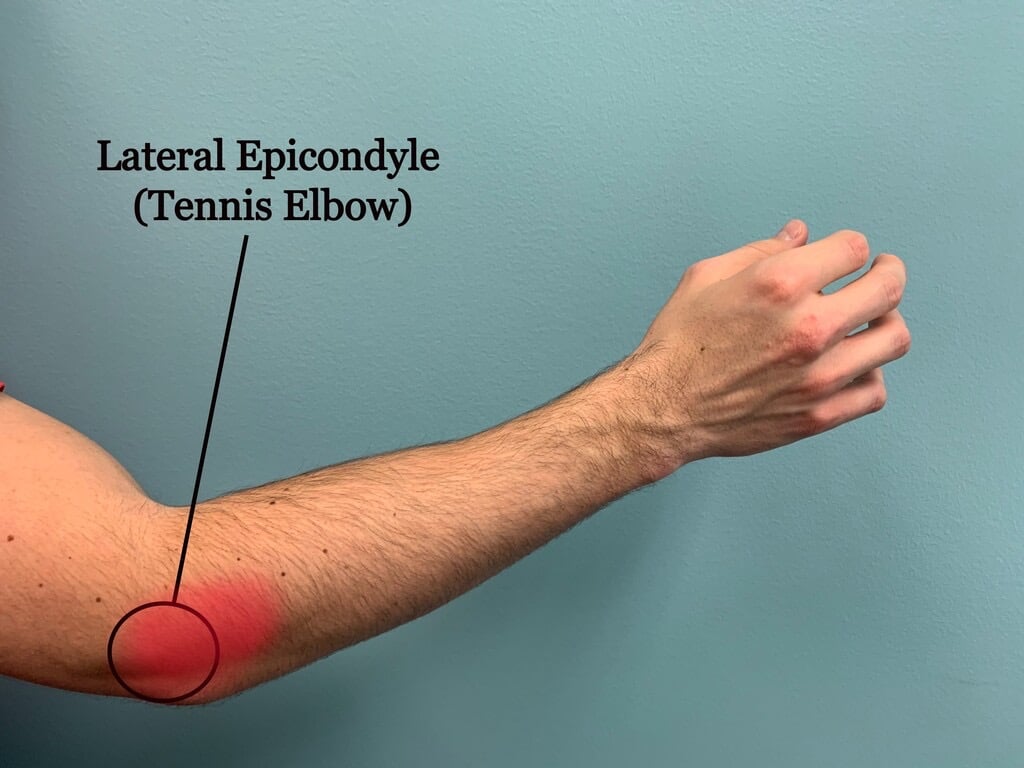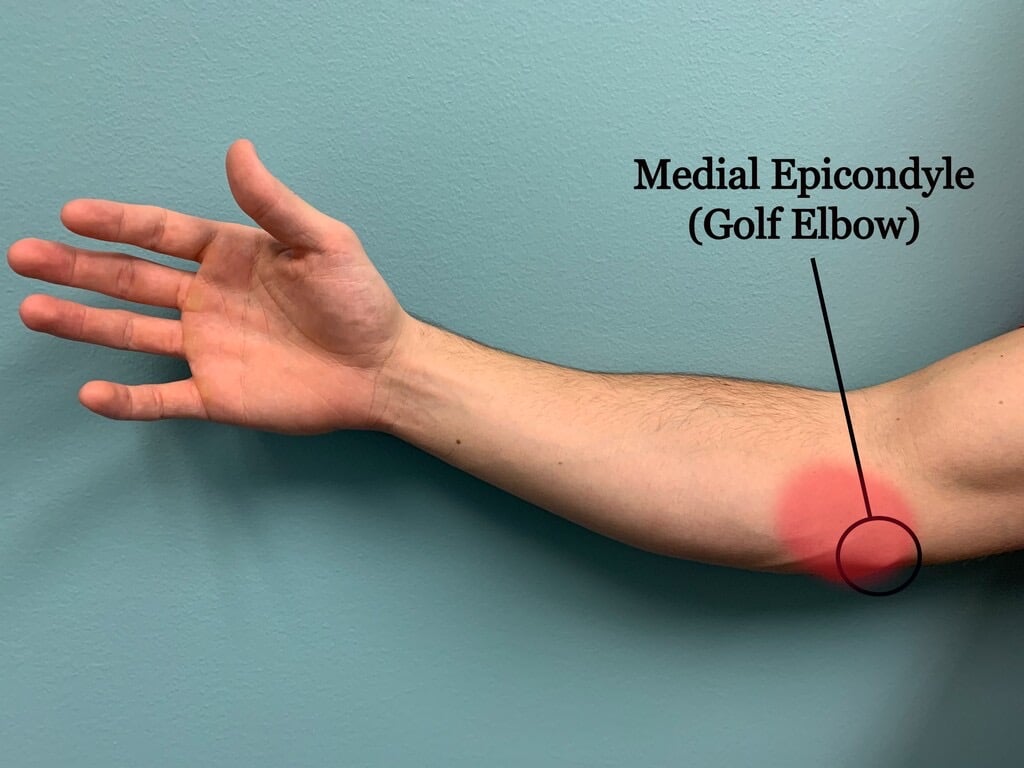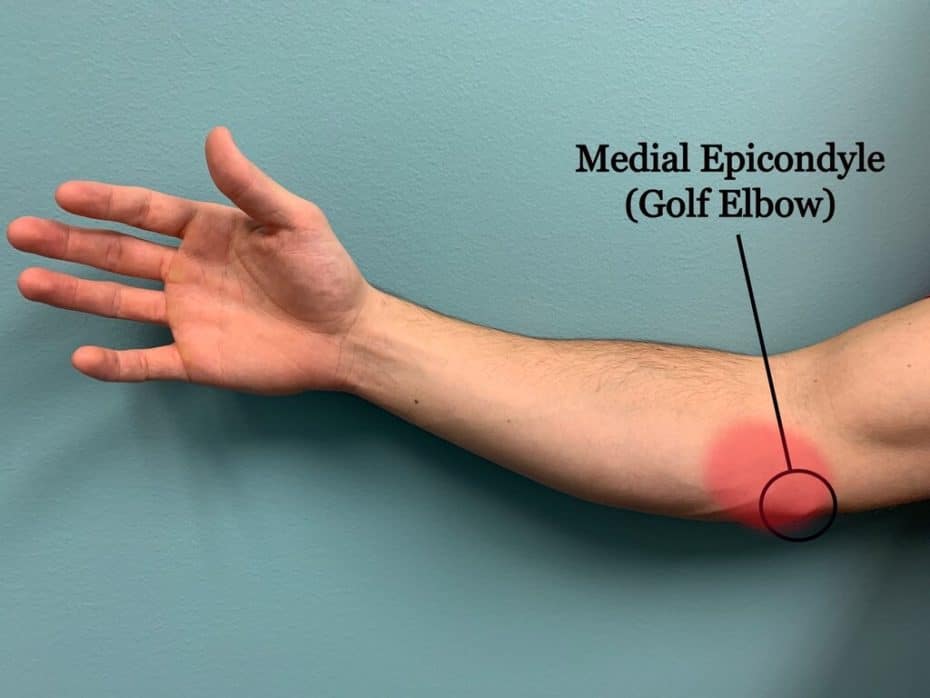Tennis elbow and golf elbow
Tennis elbow and golf elbow are very common. Despite the names, you don’t have to be a golfer or a tennis player to develop either of these elbow tendonitis-related injuries. Both of these injuries typically develop when certain tendons in your elbow become overloaded, overused, or poorly used. Typically, these elbow injuries occur from repetitive activities with the wrist, arm, and/or fingers. Whether it is “golf” or “tennis” elbow all depends on the tendons involved (1).
Lateral Epicondylitis vs Medial Epicondylitis (1-3)
Epi- what? Epicondylitis is the inflammation of the tendons attached to your humerus, your upper arm bone, which makes up part of your elbow. The tendons involved with Tennis Elbow are attached to the bony bump on the outside of your elbow, this structure is also known as the lateral epicondyle of the humerus. Golf elbow involves the tendons attached to the bony bump on the inside of your elbow, known as the medial epicondyle of the humerus.


How can either injury occur?
The activities that can commonly cause a flare up of these tendons include, playing tennis or racquetball, playing golf (or any other repetitive sport with the use of the elbow, wrist, or fingers), performing auto work or repetitive use of tools, forceful pulling on a lawn mower cord, twisting or carrying objects, poor ergonomics when at your computer or when using your phone.
Who is at risk for Tennis and/or Golf Elbow?
Did you know that only 5 percent of tennis elbow cases are of those who actually play tennis (2)?
Individuals at risk for developing tennis elbow include:
- Painters
- Grocery store cashiers
- Mechanics
- Those who work at a desk and type and click frequently
- Warehouse workers
- Tennis players
- Many others with repetitive jobs
What does it feel like?
- Pain or aching in elbow, forearm, and maybe the wrist and hand
- Tenderness when touching the muscles on the outside of the elbow and/or forearm
- Difficulty with turning a doorknob, holding a coffee cup, opening a jar
- Increased pain when lifting, using your wrist, and gripping
- Decreased grip strength
What can you do?
Try to figure out what activity is causing your tendinitis–are you doing any repetitive tasks that aggravate your symptoms?
If you are able to take a rest break from these tasks, do so, and try some of these tips:
- Rest – it is important to allow those tendons to heal.
- Ice your elbow before and after the activity that increases your pain.
- Have several layers of fabric between the ice and your skin.
- Leave the ice on for only 20 min at a time–do not fall asleep with ice on.
- Perform stretches for your wrist and elbow before and after this activity and throughout the day.
If your symptoms persist, it may be time to get creative in how you perform these activities to prevent further injury. If you are unable to discontinue these tasks because it is a big part of your job or daily routine, and stretching and icing doesn’t help, then finding better mechanics for your wrist is needed. Try to keep your wrist in as neutral of a position as possible when performing your task. (4)
Need help?
If you are having trouble with reducing or eliminating your symptoms, your physical therapist or chiropractor can help explain and guide you through a plan to address this. Tennis and golf elbow are conditions we treat at Capital Chiropractic & Rehabilitation Center. We are happy to help you with returning to living your best life. Call us at 515-421-4018 or schedule online at capitalchirodsm.com.
References
- Tennis elbow. (2019, February 14). Retrieved December 29, 2020, from https://www.mayoclinic.org/diseases-conditions/tennis-elbow/symptoms-causes/syc-20351987
- Physical Therapy Guide to Tennis Elbow (Lateral Epicondylitis). (2019, August 03). Retrieved December 29, 2020, from https://www.choosept.com/symptomsconditionsdetail/physical-therapy-guide-to-tennis-elbow-lateral-epicondylitis
- Golfer’s elbow. (2020, October 10). Retrieved January 04, 2021, from https://www.mayoclinic.org/diseases-conditions/golfers-elbow/symptoms-causes/syc-20372868
- Publishing, H. (n.d.). Stop elbow pain and stay in the game. Retrieved January 11, 2021, from https://www.health.harvard.edu/pain/stop-elbow-pain-and-stay-in-the-game
Share this Post

